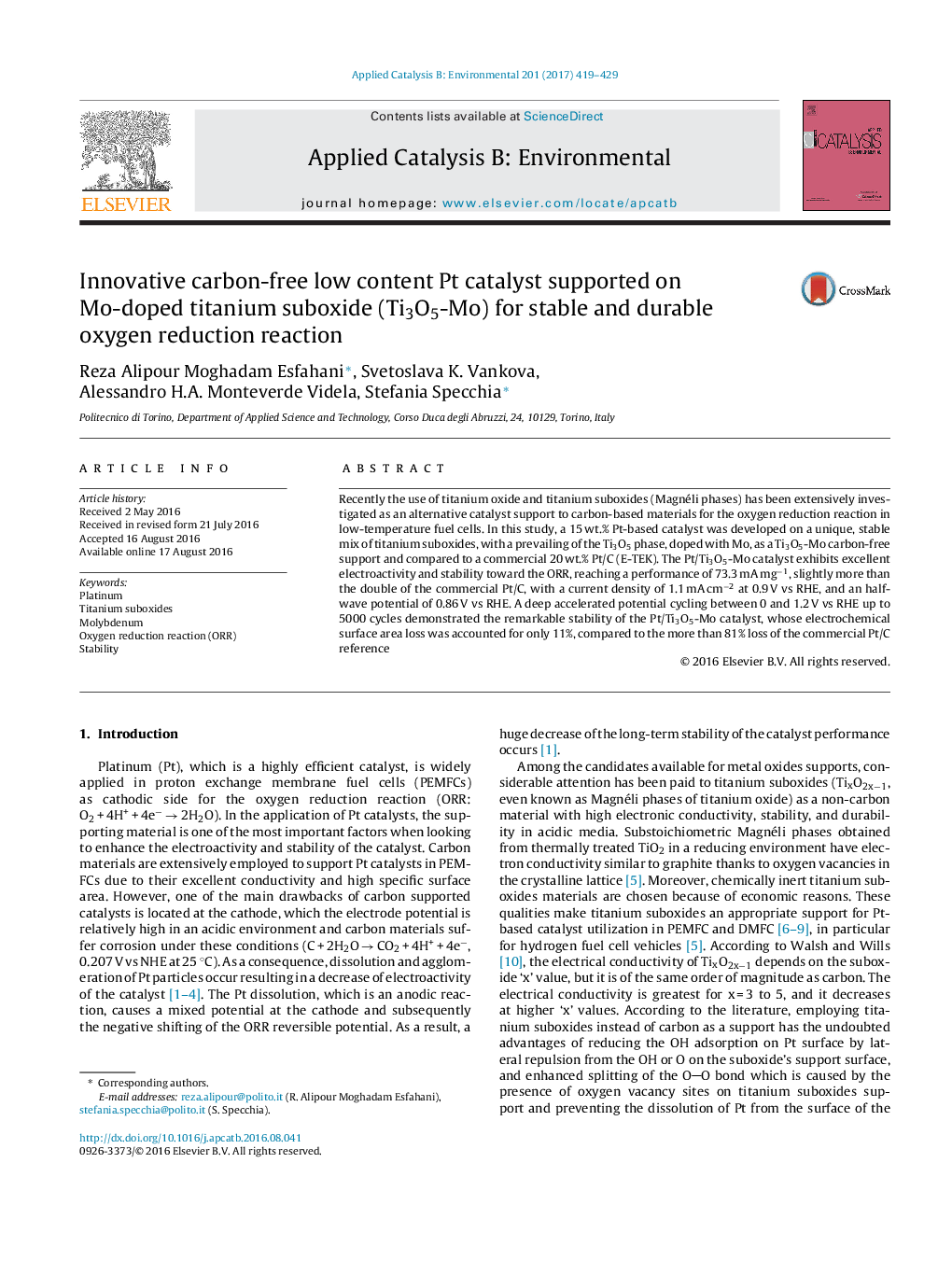| Article ID | Journal | Published Year | Pages | File Type |
|---|---|---|---|---|
| 6455035 | Applied Catalysis B: Environmental | 2017 | 11 Pages |
â¢TiO2 doped with Mo treated at 850 °C in N2:H2 produces Ti3O5, with few T6O and TiO2.â¢15 wt% Pt on Mo-doped trititanium pentoxide synthesized as carbon-free catalyst.â¢Interesting RDE activity in acid solution (0.5 M H2SO4, 0.1 M HClO4) toward the ORR.â¢Excellent stability after accelerated potential cycling test up to 5000 cycles.
Recently the use of titanium oxide and titanium suboxides (Magnéli phases) has been extensively investigated as an alternative catalyst support to carbon-based materials for the oxygen reduction reaction in low-temperature fuel cells. In this study, a 15Â wt.% Pt-based catalyst was developed on a unique, stable mix of titanium suboxides, with a prevailing of the Ti3O5 phase, doped with Mo, as a Ti3O5-Mo carbon-free support and compared to a commercial 20Â wt.% Pt/C (E-TEK). The Pt/Ti3O5-Mo catalyst exhibits excellent electroactivity and stability toward the ORR, reaching a performance of 73.3Â mAÂ mgâ1, slightly more than the double of the commercial Pt/C, with a current density of 1.1Â mAÂ cmâ2 at 0.9Â V vs RHE, and an half-wave potential of 0.86Â V vs RHE. A deep accelerated potential cycling between 0 and 1.2Â V vs RHE up to 5000 cycles demonstrated the remarkable stability of the Pt/Ti3O5-Mo catalyst, whose electrochemical surface area loss was accounted for only 11%, compared to the more than 81% loss of the commercial Pt/C reference
Graphical abstractDownload high-res image (204KB)Download full-size image
